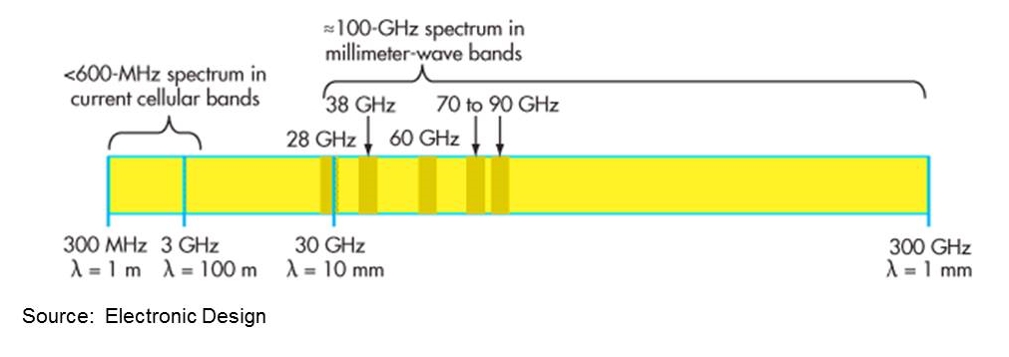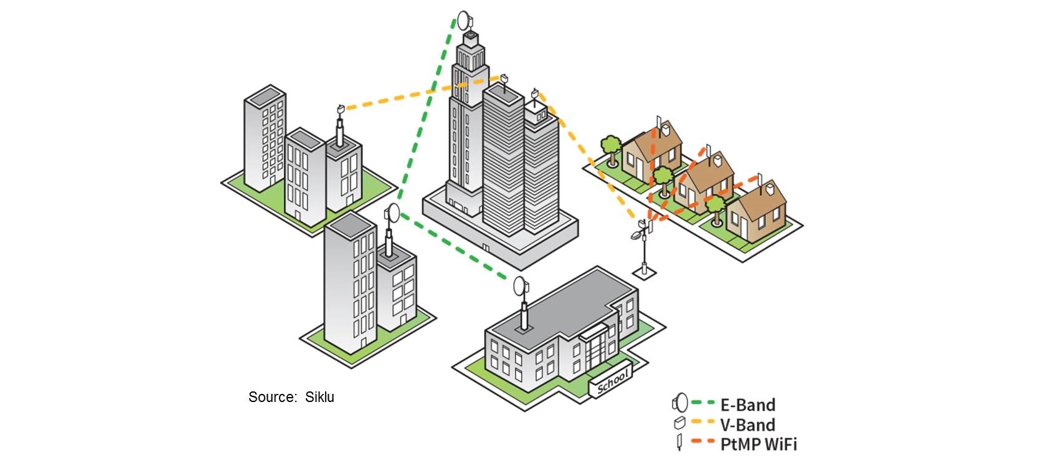After many ambitious starts by operators hoping to build gigabit networks, the reality sets in. Building out fiber to all premises is difficult, slow, complicated and expensive. In order to achieve a reasonable ROI, many operators avoid locations that are difficult to serve, resulting in these high-speed, high-quality networks going to only a chosen few. This not only widens the digital divide but also makes the goal of a “gigabit society” difficult to achieve.
But not impossible.
With the forthcoming 5G network, operators (particularly those in North America) are taking another serious look at using high-frequency millimeter wave (mmWave) combined with dynamic beamforming and massive MIMO to offer a scalable way of deploying gigabit-based fixed broadband in a cost effective and timely manner.
While this type of solution is nothing new (think LMDS from the late 1990s), a significant amount of research has been performed in antenna design, wavelength propagation, and beam steering/forming/tracking to aid the industry in network design. This has also led to a significant reduction in the cost of equipment, led by advances in silicon. Combined with a growing demand for gigabit services, all of this results in new business models that are making this solution attractive again.
Why Is Millimeter Wave “Hot” Again?
Millimeter wave is gaining renewed interest due to the large amount of bandwidth that is available for its use – far more than is currently in use by wireless carriers. By the ITU definition, the millimeter-wave band spans from 30 to 300GHz. However, neighboring frequencies, from about 10 to 30GHz, may also be included because these waves propagate similarly to millimeter waves.

Millimeter wave technology offers two things: First, it offers more spectrum (10x more) and larger channels (5-100x). For instance, sub 6GHz band offers channel widths of 20MHz, while mmWave bands offer channel widths of 500MHz and even up to 1GHz. The ability to deliver gigabits of capacity requires multiple gigahertz of spectrum. Secondly, mmWave utilizes large arrays and narrow beams which offer reduced interference and better spectrum reuse as multiple users share the same channel.
These capabilities enable very high throughput and low packet delay that will be increasingly required for the plethora of proposed 5G applications and services.
MmWave bands are defined by short-to-medium ranges (up to a few kilometers), meaning they are best suited for urban and sub-urban environments. Furthermore, these shorter ranges are optimal for providing that final connectivity (100-300 meters) for fixed broadband services as well as backhaul for small cells, which will play an extensive role in 5G networks.
Two key bands in the mmWave spectrum are the V-Band and E-Band. The V-Band is characterized by a continuous block of 9GHz of spectrum between 57 and 66GHz, and is most mostly unlicensed or lightly licensed depending on the country. The E-Band is at 71-76GHz and 81-86GHz. The E-Band enables gigabit-per-second data rates given the huge amount of available spectrum (10GHz) without any oxygen absorption, thus allowing longer distances compared to V-Band.
Millimeter wave technology offers a number of capabilities that make it suitable for a wide range of applications and use cases. Features such as multi-Gbit/s capacity and sub-ms latency performance make it suitable for both backhaul and fronthaul applications, as well as support to locations where fiber is not available or is too expensive to deploy.

Millimeter wave provides very high-frequency re-use capabilities, allowing deployments in very dense applications – a critical need as the number of devices attaching to the network continues to grow. Additionally, because mmWave requires very small antennas, this enables small form factors making it attractive for discreet deployments. Finally (and perhaps its most appealing features) is its ability to contribute to total cost of ownership (TCO) optimization and time to market acceleration, as operators may deploy in unlicensed or lightly licensed spectrum. This results in rapid deployment as well as reduced OPEX.
A Hybrid Fiber-Wireless Approach for Fixed Location Broadband
By combining high-frequency millimeter wave (mmWave) connections with traditional fiber deployments, operators are able to create a hybrid fiber-wireless network, to offer gigabit speeds in a cost effective and timely manner.
For operators such as Google, AT&T, Verizon and others that are actively deploying FTTH networks, the most expensive and time-consuming aspect of deployment is connecting the customer premises to the network.
This hybrid approach helps create a “zero-dig” operation where operators no longer have to trench in fiber to the premises and a “zero-touch” installation process where services can be self-installed by the customer, rather than requiring a technician. This capability has an immediate positive impact on TCO optimization by reducing the cost to deploy and install, making it possible to expand their service areas for gigabit broadband.
Verizon is expected to take advantage of its extensive spectrum holdings in the 28GHz band (via its XO Communications acquisition) to launch commercial mmWave fixed broadband services, using a hybrid architecture in 2017.

Facebook and Google Ride the mmWave Wave
Both Facebook and Google are actively involved in a number of mmWave research projects.
Facebook, through its Connectivity Lab is working on technology to help connect the unconnected and underserved. One of these projects is Terragraph, a 60GHz multi-node wireless system (utilizing the unlicensed “V-band”), targeting high speed connectivity in dense urban areas.
Terragraph’s system consists of radios that are based on open WiGig standard, which has been publicly available since 2010. This allows third party hardware such as phones, cars, and home Wi-Fi routers to be more easily built with Terragraph-friendly antennae.
According to Facebook, Terragraph nodes are placed at 200-250 meter intervals, designed to provide street level coverage. Terragraph implements a phase array antenna to retain the highly directional signal required at 60GHz, but makes it steerable to route around interference such as tall buildings.
Facebook testing has already shown total throughput speeds as high as 2.1Gbit/s for a single distribution node.

Google is working on mmWave from a couple of different angels. In June 2014, it bought Alpental Technologies, a startup that was working on hyper scalable mmWave networking solution for dense urban nextGen 5G and Wi-Fi in the 60GHzband. They also acquired Webpass, a wireless ISP offering gigabit broadband services using mmWave solutions in urban environments for MDUs.
Beyond its acquisitions, Google has filed a number of applications (and received approval) for experimental licenses to conduct nationwide airborne (Project Loon) and terrestrial mmWave trials in the E-band, as well as terrestrial mmWave trials in the 3.5, 5.8, 24, 72, and 82GHz band.
Google is looking at mmWave as a solution to significantly reduce the time to market for its Google Fiber services, allowing for a rapid expansion into its proposed markets.
mmWave Holds Strong Promise for Expanding Gigabit Services
Using mmWave for fixed broadband applications is not without it challenges – most notably the need for Line of Sight and the fact that it is primarily an outdoor deployment. However, given the expected continued growth in demand for bandwidth – the need for gigabit broadband is becoming increasingly more urgent. As such, it is impractical to serve a large portion of the population with a completely wired solution. Millimeter wave has the potential to accelerate the availability of gigabit broadband services, enabling a plethora of new services and business models and laying the foundation for a fully connected society.
